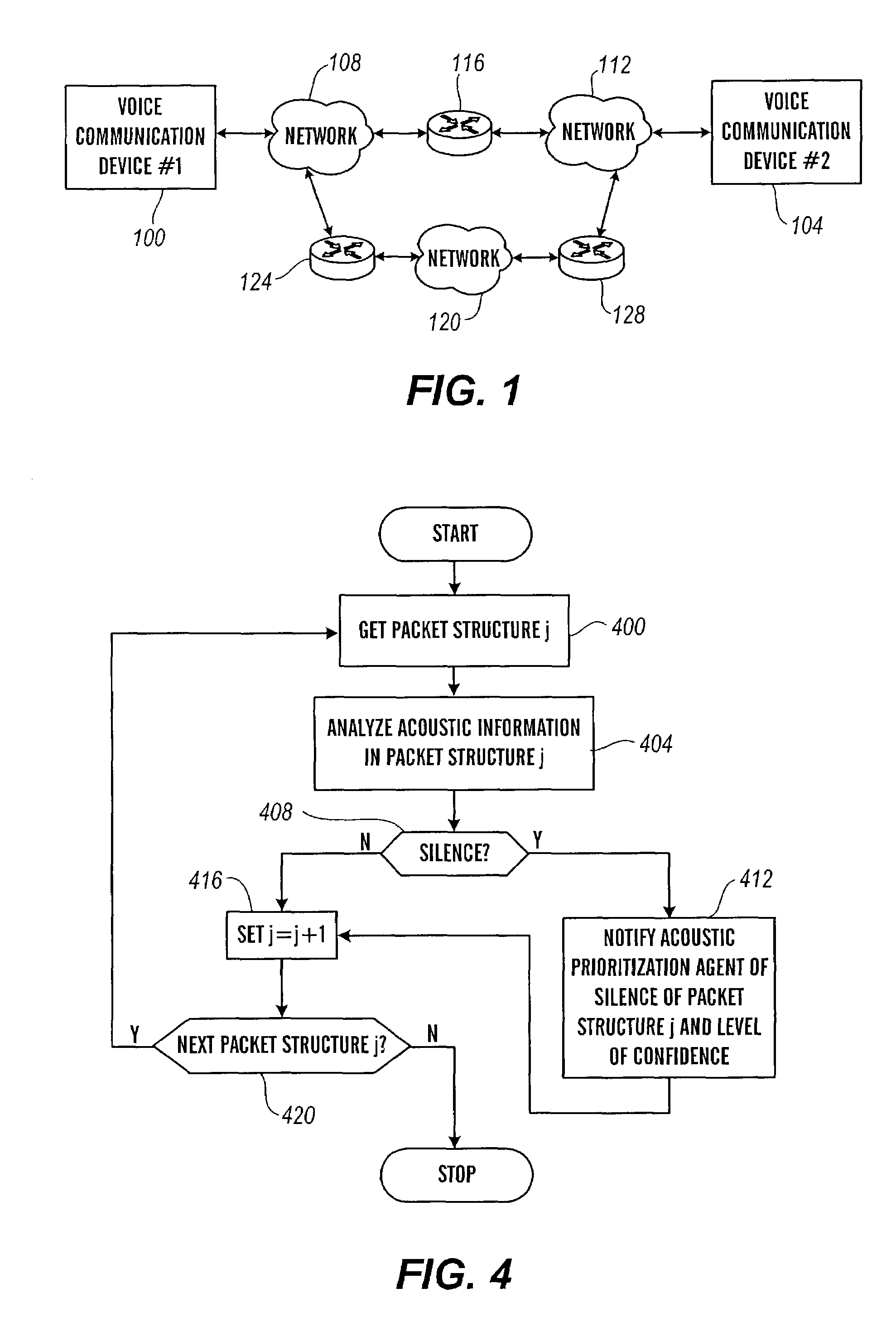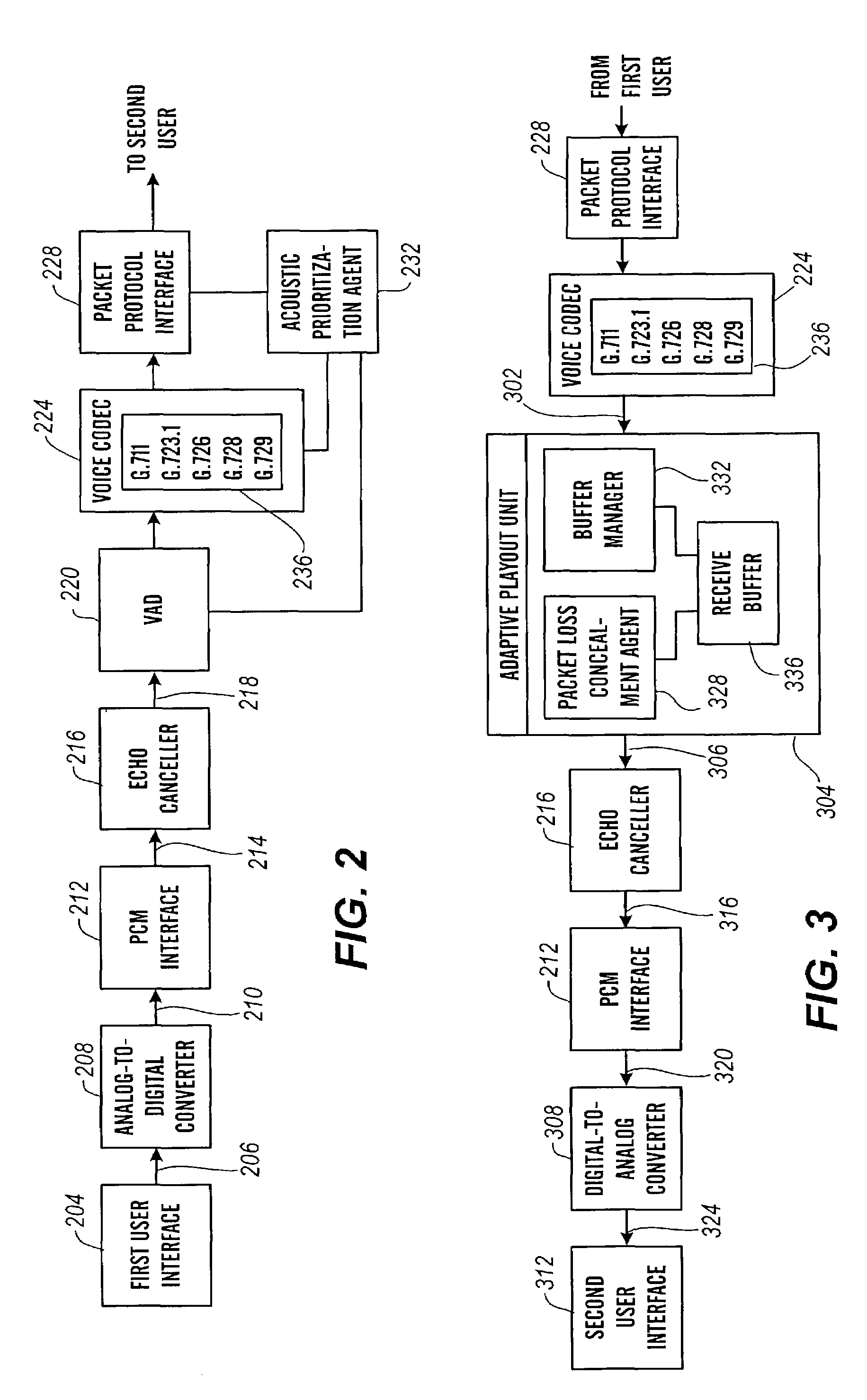Packet prioritization and associated bandwidth and buffer management techniques for audio over IP
a buffer management and audio over ip technology, applied in the field of audio communication, can solve the problems of unreliable vad, noticeably impaired voice quality, concomitant loss of voice quality, etc., and achieve the effect of reducing the likelihood of packets, reducing transmission priority, and high transmission priority
- Summary
- Abstract
- Description
- Claims
- Application Information
AI Technical Summary
Benefits of technology
Problems solved by technology
Method used
Image
Examples
Embodiment Construction
[0029]FIG. 1 is a simplistic VoIP network architecture according to a first embodiment of the present invention. First and second voice communication devices 100 and 104 transmit and receive VoIP packets. The packets can be transmitted over one of two paths. The first and shortest path is via networks 108 and 112 and router 116. The second and longer path is via networks 108, 112, and 120 and routers 124 and 128. Depending upon the path followed, the packets can arrive at either of the communication devices at different times. As will be appreciated, network architectures suitable for the present invention can include any number of networks and routers and other intermediate nodes, such as transcoding gateways, servers, switches, base transceiver stations, base station controllers, modems, router, and multiplexers and employ any suitable packet-switching protocols, whether using connection oriented or connectionless services, including without limitation Internet Protocol or IP, Eth...
PUM
 Login to View More
Login to View More Abstract
Description
Claims
Application Information
 Login to View More
Login to View More - R&D
- Intellectual Property
- Life Sciences
- Materials
- Tech Scout
- Unparalleled Data Quality
- Higher Quality Content
- 60% Fewer Hallucinations
Browse by: Latest US Patents, China's latest patents, Technical Efficacy Thesaurus, Application Domain, Technology Topic, Popular Technical Reports.
© 2025 PatSnap. All rights reserved.Legal|Privacy policy|Modern Slavery Act Transparency Statement|Sitemap|About US| Contact US: help@patsnap.com



